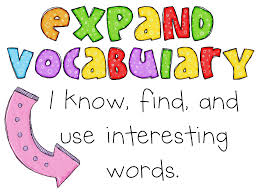TARGET SBI EXAM 2018 : ENGLISH – READING COMPREHENSION
Want to Become a Bank, Central / State Govt Officer in 2020?
Join the Most awarded Coaching Institute & Get your Dream Job


Now Prepare for Bank, SSC Exams from Home. Join Online Coure @ lowest fee
Lifetime validity Bank Exam Coaching | Bank PO / Clerk Coaching | Bank SO Exam Coaching | All-in-One SSC Exam Coaching | RRB Railway Exam Coaching | TNPSC Exam Coaching | KPSC Exam Coaching
TARGET SBI EXAM 2018 : ENGLISH – READING COMPREHENSION
Dear Bankersdaily Aspirants,
SBI PO & SBI Clerk Exam 2018 will happen in the forthcoming days and the preparations have to be in a different arena to crack the exam. Since there is no cutoff marks for the SBI PO & SBI Clerk Exam 2018 Prelims Exam the preparations have to be in a different level and only the candidates who score the maximum marks will obtain a place in the Mains Exam.
Learning daily will give you the much needed confidence and the preparation strategy to crack the SBI PO & SBI CLERK Prelims Exam 2018. So, Team Bankersdaily provides you with the best preparation materials and also the Questions which will boost your preparations.
Attend these Quizzes Daily and take your preparations to the next level. Today we are providing Reading Comprehension Questions which is in the medium level. Crack the Strategy and apply this in your exams.
Exam: SBI Clerk & PO Exam 2018
Topic: Reading Comprehension
Timing: 10 minutes
Directions (1-10): Read the following passage carefully and answer these questions given below it. Certain words/phrases have been printed in BOLD to help you locate them while answering some of the questions.
The final months of 2016 witnessed high drama in Tamil Nadu, with millions across the State overcome by grief following the prolonged hospitalisation and subsequent demise of Chief Minister J. Jayalalithaa. The first few weeks of 2017 have since seen protests over the issue of jallikattu convulse the State. To “outsiders”, viz. those not belonging to Tamil Nadu, it may appear extraordinary that so much frenzy should be on display over an issue that, elsewhere, would be merely equated with the sport of bullfighting. However, those guilty of simplistic assumptions of this kind would be unable to see the wood for the trees.
Steeped in hoary tradition, dating back to the fabled Sangam era, jallikattu holds a special place in the hearts and minds of ordinary Tamil folk. The decision of the Supreme Court, in May 2014, to uphold the Central government’s notification of 2011 (adding bulls to the list of animals whose training and exhibition is prohibited), in effect formalised the ban on bullfighting as a sport. However, it seemed to trigger concerns among sections in Tamil Nadu that it amounted to an assault on Tamil culture and Tamil pride. Such feelings had possibly lain dormant but seemed to come to life after the ban.
It has been a field day for conspirators and conspiracies thereafter. Questions have been raised as to how and why a situation — that had merely been simmering for some time — should all of a sudden turn explosive. Most ongoing rumours had little to do with jallikattu as a sport; they related mainly to the turn of events following the demise of the former Tamil Nadu Chief Minister. Accusations relating to the “usurpation” of the mantle of Chief Minister by so-called “pretenders” added spice to these rumours. In the circumstances that prevail today in Tamil Nadu — presenting as it does a sorry spectacle of being adrift in choppy waters — the jallikattu agitation only provided an opportunity to stir up the proverbial witch’s brew. In this unedifying situation, every rumour appeared to have an element of truth.
The movement, at the outset at least, appeared spontaneous. It was perceived as a peaceful protest by Tamil youth against restrictions imposed on jallikattu, which were portrayed as an assault on Tamil cultural traditions. In the early stages, few tended to question whether any movement could be truly spontaneous. Fewer still failed to look askance at the fact that a principally rural sport (confined largely to pockets in the southern and western parts of Tamil Nadu) had suddenly become a major symbol of urban protest, and able to rally thousands of protesters. Still later, and even as it was beginning to turn into a mass movement, with the participation of large concentrations of urban people from different segments and across cities, mainly Chennai, no attempt seemed to have been made by those in authority to introspect about the true character of the movement.
It is possible that the peaceful nature of the protests lulled the vast majority into missing the true character of the agitation. Almost everybody appeared to miss the siren song of “unsynchronised awakenings” of an “under class”. It is these segments in almost every country of the world today that are leading the revolt against the so-called “elite”. It has had major political repercussions and compelled many a government to renegotiate the terms of governance. The digital highway has been the principal medium for initiating many of the radical and fundamental changes that have taken place lately and this should not be lost sight of by those in authority in India.
It is unfortunate that while such significant events were taking place, the public debate in Tamil Nadu over the jallikattu issue, and its aftermath, remained confined to old shopworn arguments and logic. The administration, under attack for the violence that occurred on the final day of the protests — even as an ordinance for the lifting of the ban on jallikattu was being promulgated and a law was being enacted — had little more to say than to accuse “outsiders”. This label included a motley group of Tamil chauvinists, secessionist elements, pro-LTTE and Tamil Eelam cadres, and some other “invisible forces” it alleged of having infiltrated into the gathering at Marina beach in Chennai and of instigating the violence. The Opposition felt comfortable blaming both the government for allowing such a situation to develop and the police for provoking the protesters and employing indiscriminate force.
It is quite obvious that the political class as a whole, and not only the administration, has little understanding of the undercurrents that exist today. For the Opposition, blaming the police for all that happened, while ignoring the provocations the latter had to contend with as also the Herculean efforts made by them during the previous days to maintain peace, is standard policy. It only highlights the nature of the intellectual vacuum that has prevailed in the State in the recent past.
The reality is far graver than what the administration and the Opposition are making it out to be. A resurgence of Tamil chauvinism is apparent. The reality also is that the politics of identity, far from receding, is very much alive. Beneath the surface calm, deep wells of unhappiness exist in the State over issues concerning so-called “Tamil pride”. Furthermore, sizable segments in Tamil Nadu feel even more estranged from New Delhi than before due to the Centre’s policies over issues such as the Cauvery water dispute. It would be much more than mere political myopia if the State administration and other State politicians were to turn a blind eye to this reemergence of anti-national and anti-social forces in Tamil Nadu.
The celebrated British physicist, Stephen Hawking, is credited with the remark that “the 21st century will be the century of complexity”. Hence, all governments need to accept that change is the order of things and that the nature of change itself changes. Logical thinking has been overtaken, or is being eclipsed, by disruptive logic.
In 1971, India dealt effectively with a problem of over a million refugees from East Bengal on its soil. Most of them returned home after the new state of Bangladesh came into being. Today, the refugee influx into Europe is threatening the very existence of Europe and is posing the most profound challenge to the traditional concept of what states are, and their meaning.
The metastasising nature of the current wave of protests, here and elsewhere, contains a message which, if not heeded, could have dangerous consequences. Growing intolerance is a special feature across societies and populations today. As the spontaneous nature of protests begins to decline, they are increasingly taken over by vociferous and intolerant groups. These elements are thereafter able, in most cases, to hold the state to ransom. This is especially true in situations where the establishment is perceived to be weak. In Tamil Nadu, the perception of a “diffusion of power” gives the impression of it being a weak state. It heightens the danger of not being able to contain situations where sub-nationalism, chauvinism, caste prejudices and insular politics hold sway.
The trend in “new wave” protests — which are occurring with greater frequency today — is towards creating a spectacle and mobilising large crowds to heighten the intensity of the initial cause. The cascading nature of public protests over the rape of a young woman in Delhi in December 2012, on the issue of safeguarding the dignity of women, is an instance in point. In Tamil Nadu today, the issue of Tamil pride could generate similar outcomes, with other grievances being added. Public opinion tends to be easily galvanised in a world which has gone from being “connected” to “hyper connected”.
Hence, we need to recognise that the reality of “indeterminate complexity” is already upon us. Scientists and mathematicians are familiar with this phenomenon. Social scientists, politicians and administrators are less familiar with it. The underlying message is that authorities need to be more discerning. There is also need for a great deal of careful thought and well-considered action in approaching such situations, and in calibrating responses.
1. Which could have been a dangerous consequences if not heeded properly accoding to the considerations by the author in the given passage ?
(A) Issues of the state that could generate grievances that could add trouble to the public
(B) Refugee influx into our country from other neighbouring nations
(C) The clean nature of the current wave of protests all over the places with a given message
(D) This is a century of complexity and so no other things could have been done on these things.
(E) Spontaneous nature of the different problems which add fuel to the existing issues.
2. Which of the following are true according to the statements given in the passsage based on the views of the author ?
(I) A resurgence of Tamil chauvinism is not apparent which may in turn seems to be false.
(II) Adminsitrators , Politicians , Social Scientists are complex and are unaware of the phenomenon.
(III) The reality is far graver than what the administration and the Opposition are making it out to be.
(IV) The century which is the previous one is the year of complexity accorsing to the great scientists who lived in that century and not now.
(V) India dealt effectively with a problem of over a million refugees from East Bengal on its soil.
(A) Only (I)
(B) Only (II) & (V)
(C) Only (III)
(D) Only (III) & (V)
(E) Only (III) , (V) & (I)
3. Which provided an opportunity to stir up the proverbial witch’s brew according to the author ?
(A) Refugee Problems
(B) Conflicts between the Government and the locals
(C) Jallikattu Protests
(D) Diffusion of Power between the Elite’s
(E) The formation of the powers
4. What can be inferred from the famous saying of the great Physicist , Stephen Hawking “ The 21st Century will be the century of Complexity” ?
(A) The problems with respect to the complexity will be less
(B) The governments will work more efficiently, since the complexity of the problems will be more and will not add trouble at that time.
(C) The changes is not eclipsed by the disruptive logic and logical thinking has not been overtaken.
(D) The thinking between the government and the public will be the same and the problems arised will be solved amicably due to that conditions.
(E) All governments need to accept that change is the order of things and that the nature of change itself changes.
5. Why Tamil Nadu is seen as a Weak state according to the author in the given passage ?
(A) No solutions were given for the Problems and the government is not responding to them.
(B) The huge amount of protests made the crowd the power centre that the present state government.
(C) Th necessity to build the confidence of the state has diminished because of the protests
(D) Diffusion of Powers – The Perception
(E) None of the above
6. Which of the following statements are false according to the given passage ?
(A) All governments need to accept that change is the order of things.
(B) The movement, at the outset at least, appeared spontaneous.
(C) Growing intolerance is a not special feature across societies and populations today.
(D) Logical thinking has been overtaken, or is being eclipsed, by disruptive logic.
(E) TamilNadu feel enstraned due to the refugee issues and also the neighbouring nations non accpetance of the refugees.
(A) Only (I) and (III)
(B) Only (II) and (IV)
(C) Only (III) , (IV) and (V)
(D) Only (V) and (I)]
(E) Only (III) and (V)
7. Choose the word which has the Opposite MEANING as the word frenzy
(A) Ferment
(B) Hysteria
(C) Outburst
(D) Harmony
(E) Imbalance
8. Choose the word which has the Opposite MEANING as the word adrift
(A) Unfloat
(B) Loose
(C) Drift
(D) Stable
(E) Unmoored
9. Choose the word which has the Exact MEANING as the word vociferous
(A) Below
(B) Silent
(C) Quiet
(D) Insistent
(E) Calm
10. Choose the word which has the Exact MEANING as the word confined
(A) Restricted
(B) Exposed
(C) Given out
(D) Anchored
(E) Purposeful
Answer Key
1) (C) The clean nature of the current wave of protests all over the places with a given message
2) (D) Only (III) & (V)
3) (C) Jallikattu Protests
4) (E) All governments need to accept that change is the order of things and that the nature of change itself changes.
5) (D) Diffusion of Powers – The Perception
6) (E) Only (III) and (V)
7) (D) Harmony
8) (D) Stable
9) (D) Insistent
10) (A) Restricted
| Day 17 | Circular seating – 1 (facing in ward) | Quadratic-2 | Reading comprehension |
Aspirants can also check the other topics from the SBI CLERK STUDY PLANNER from the link given below. DO bookmark the given link as all the posts will be updated in that page and aspirants can check the daily updates from this page or from the Homepage of Bankersdaily.




